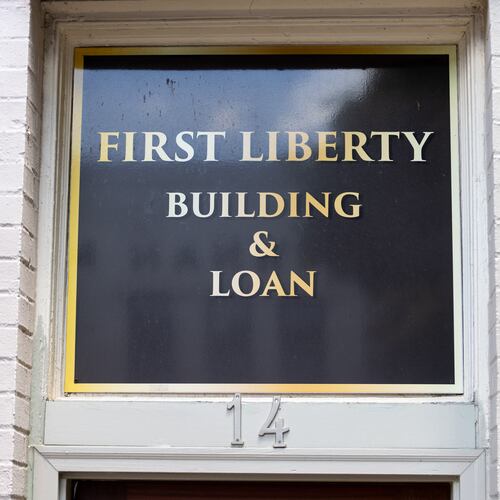High cost, low return
Georgia’s Special Council of Criminal Justice Reform is comprised of 40 members — state lawmakers, judges, attorneys and others — who bring diverse perspectives to evaluating Georgia’s criminal sentencing policies. The group’s recommendations were the basis for sweeping change signed into law this year that will save taxpayer dollars by reserving adult prison beds for the state’s most violent offenders and offering alternative sentencing for nonviolent offenders. Here are some of the group’s recommendations for reducing the number of juveniles who are incarcerated, which could save Georgia $88 million over five years.
- Divert nonviolent youth to alternative programs instead of incarcerating them. About one-fourth of incarcerated juveniles are there for misdemeanors, or status offenses like truancy.
- Implement better risk assessment tools. The state is locking up too many juveniles not likely to become repeat offenders.
- Create more community based programs as an alternative to incarceration. Parts of Georgia lack such alternatives, leaving incarceration as the only choice for judges.
Georgia should save taxpayers tens of millions of dollars a year by diverting some juveniles away from detention facilities and into community-based programs, according to a group tasked with reviewing the state’s criminal justice system.
The state’s Special Council on Criminal Justice Reform for Georgians recommends reversing some of the harsher policies of the 1990s on how Georgia punishes its youngest offenders. It calls for the state to reserve incarceration for the most hardened juveniles who are most likely to commit future crimes. The report released Wednesday is part two of a two-year-long effort to reform Georgia’s criminal justice system.
Earlier this year, state lawmakers adopted sweeping reforms to the adult prison system that similarly promise millions of dollars in cost savings over time by adopting alternative forms of punishment for nonviolent offenders.
The report said the state stands to save $88 million over the next five years because almost 640 fewer teenagers would be put into a secure facility at a cost to taxpayers of $90,000 a year per bed.
The recommendations are an attempt to back off the get tough on “young thugs” approach that began in the 1990s, a period when laws were adopted with significant time for all criminals, no matter their ages.
“There has been a pendulum swing. … It’s an attempt to strike a balance,” Kirsten Widner of the Barton Child Law and Policy Center in Atlanta said Wednesday. “This is an attempt to strike a better balance and correct an over-zealous direction.”
One of the recommendations in the 30-page report is that truants and runaways — considered “status offenders” — should not be sent to a short-term regional youth detention center or a long-term youth development campus. And juveniles accused of misdemeanors also should be diverted to community-based programs unless they are before a juvenile judge for a fourth time. The report said about 25 percent of the kids in state lockups last year were in there for status offenses or misdemeanors. A status offense, such as chronic truancy or under-aged alcohol consumption, is a crime only because it is committed by a juvenile.
The council also suggested refining the list of offenses considered to be “designated felonies” that ensure a lengthy time in custody, up to five years, for the most serious, usually violent, crimes. In 1980, the law had only 11 designated felonies, which were the most serious crimes such as murder, rape and kidnapping. Now 30 crimes are considered designated felonies, including crimes against property offenses like smash-and-grab burglaries. About 98 percent of the youth in the YDCs are in for a designated felony.
“The policy recommendations will further focus the state’s use of expensive out-of-home facilities on serious, higher-risk youth. By doing this, the state will generate savings that can be used to increase the availability and effectiveness of community-based options. The net result would be less crime at lower cost to taxpayers,” the report said.
On Wednesday, the state had 684 teenage boys and girls in eight long-term facilities and another 1,074 in 20 short-term facilities. In 2002 the state had 3,000 teenagers in its juvenile facilities.
“Despite a recent decline in the number of youth in the juvenile justice system, the cost to Georgia taxpayers remains substantial and the state has not received a sufficient return on its investment,” the report said. “The recidivism rate remains high.”
About 65 percent of the kids come back to the juvenile justice system or are convicted as adults within three years, the report said.
“The council believes that these rates of recidivism are unacceptable, especially given the high costs to taxpayers,” the report said.
Widner said often kids who could have been salvaged are pushed closer to a criminal life once they go into a juvenile facility, where fights and violence are common. For example, a boy died and another had his jaw broken in disturbances at the YDC in Augusta and the RYDC in DeKalb County has had to call police to help them quiet rioting boys.
This report also suggested that:
•There be an assessment of a how likey a juvenile is to commit more crimes, what their mental health issues are and what programs may help them and their families before they are committed into state custody. The report said group homes or community-based programs may be more appropriate for some.
•There be more local sentencing options for judges with the funding coming from grants and savings because fewer kids are in state lockups.
State Rep. Wendell Willard, R - Sandy Springs, who earlier this year pushed unsuccessfully for a complete rewrite of the law concerning children — those who had been deprived as well those accused of crimes — said he will again advocate for a rewrite of the Georgia Code but this time his bill also will include the recommendations of the governor’s commission.
About the Author
The Latest
Featured

